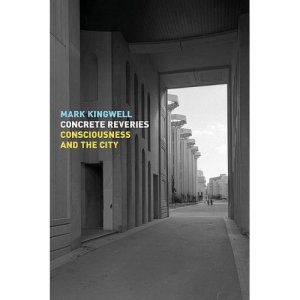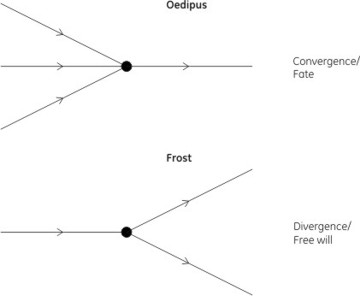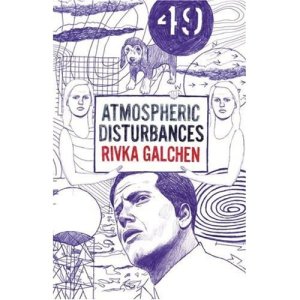A review of Concrete Reveries: Consciousness and the City by Mark Kingwell. Viking Canada: 2008.

The latest book by noted philosopher and public intellectual Mark Kingwell is an unique examination at how the structure of the modern city moulds the conscience and its interactions within society, and likewise how the modern city can be represented as an extension of the consciousness of its citizens (a reverie made concrete, if you will).
The book reads like a collection of thematically linked essays, which can be roughly grouped into three sections. The opening chapter on concrete stands alone (and was originally published as an essay in Harpers magazine). Chapters on New York City and Shanghai bookend and complement a discussion on public spaces, providing diametrically opposed examples of the effects of architecture and planning on civic discourse. The latter half of the book examines philosophical issues of mind and body, of boundaries, and of our sense of place within the city.
Concrete Reveries begins with an irreverent overview of its titular subject matter, concrete, that much-maligned substrate of the much-maligned modernist city. Despite its very real associations with the brutal and the ugly, Kingwell demonstrates that in many aspects it can be both humane and (yes) beautiful.
The narrative then gathers steam with a discussion of public spaces and their effects on social and political life. This begins with an examination of New York City, the canonical city of the twentieth century, then considers the critical role that citizens and the structure of the city play in civic discourse and democracy, and concludes with an examination of the Shanghai, the oft-described “city of the twenty-first century.”
In the chapter on New York, Kingwell aptly captures the vitality and spirit of this thriving metropolis. Central to this chapter is an examination of two experiential senses of New York: the orderly Cartesian grid north of 14th Street, and the chaotic Byzantine labyrinth south of 14th Street.
The orderly grid of north Manhattan forces its citizens into a fixed rhythmic cadence, where one is always properly oriented and has an exact sense of place. Exploring the northern part of the city by foot quickly becomes mechanistic experience, as the regularity of the grid orders, structures, and thus subtly controls the citizens who navigate it. The pedestrian experience of lower Manhattan is quite different. There, the chaotic mish-mash of streets forces citizens to into closer contact with one another as the metronomic regularity of the north Manhattan experience breaks down. It becomes easier to get lost or disoriented, there is a sense of discovery, of the unexpected, of surprise, even of danger. The citizen is forced out of reverie and called upon to think actively, to make decisions, to take chances. This is the Piraeus where democracy happens. Like the experience of navigating lower Manhattan, the experience of democracy is messy, inefficient, frustrating, and resistant to order; it is humanistic, not mechanistic, and thrives in synonymic environments.
By contrast, the description of Shanghai leaves one with the impression of a cold, soulless, postmodern Hell, an aggressive affront to democracy by the malignant communist-capitalist Janus that is twenty-first century China. Like the worst corporate blandscapes of American suburbia, where citizens avoid deserted streets in favour personal vehicular fiefdoms, there is a gaudy shallowness to Shanghai that the no amount of glitz can mask. This horrid amalgam has become the playground of the new wave of utopian architects, a clean slate where they can build fantastic structures untrammeled by the messiness and inefficiency of democracy. Kingwell summarizes this trend with the following prescient truism.
Utopian visions of western architecture can only be realised by the authoritarian and dictatorial regimes of the east.
What does this say about architects themselves, and their work? Modernist architecture, in its genesis, was intended to serve democracy (so mentions many a modernist manifesto), but the associative impulse of modernism, in architecture at least, tends towards what Kingwell calls a “latent fascism”. Architects openly bemoan the compromises required by active democracy, but in Shanghai they have found a willing and subservient pawn for their delusions of grandeur.
It would have been interesting at this point to have a comparison between Shanghai and Pyongyang, a city that Kingwell (oddly) never mentions. Both are quasi-artificial realizations of oppressive anti-democratic regimes (one of old-school Stalinist communism, one of new-school communocapitalism), both represent a disturbing dystopic vision imbued by their corresponding strident ideologies, and both are bleak and depressing results of modern architecture’s shameful subservience to totalitarianism in order to achieve its artistic ends.
Kingwell succinctly describes Shanghai as “sometimes beautiful, often strange, and always oppressive.” If Shanghai represents a vision of the future city, then this vision is a terrible dystopian nightmare worth fighting against.
The subtitular chapter Consciousness and the City considers how civic architecture, and its dynamic with consciousness in space and time, relates to notions of free will and determinism. Kingwell provides two paradigmatic examples from western literature, from the dramas of Sophocles and the poetry of Robert Frost. The story of Sophocles’ Oedipus the King is one of fate (determinism): he is fated to kill is father and marry his mother, and this fate is represented by the spatiotemporal convergence of three roads where Oedipus unknowingly murders Laius. The three roads converge into one, and there is only one way forward for poor Oedipus (and hence no free will). Conversely, the story of Frost’s The Road Not Taken is not one of fate but is one of choice (free will): the protagonist is offered choice between two paths in the wood (and two paths in life). Here, the single road diverges into two roads, and he must decide whether to take the easy road (and its implicit shallow rewards) or the hard road (and its implicit greater rewards).

Fascinating, you may say, but how does this relate to the modern city? Consider the earlier discussions on New York and Shanghai. The chaotic city, represented by New York (and in particular lower Manhattan) reflects the idea of free will, with its non-deterministic structure offering many divergences and spatiotemporal paths. This is democracy concretized. On the other hand, the ordered modern city, represented by Shanghai (and by modern suburban sprawl), reflects the idea of fate: all roads lead to their respective teleological ends, chaos and divergence have been subsumed by technological determinism. This is autocracy concretized.
The latter half of the book expands on the ideas of the city and consciousness by delving deeper into a philosophical overview of the mind/body problem. The narrative becomes a bit dense here, with many philosophical asides that can be somewhat confusing. It helps if the reader has some background in philosophy, but these asides may still be enjoyed by the attentive reader, and difficult sections passed over without losing much of the epistemic import (after all, how much Lacanism can one really stomach?). The central notion that Kingwell wants to establish is that of an embodied mind (contra Plato and Descartes), and how the mind, situated within and shaped by the body, is also shaped by the environmental situations of the body (and, being embodied, of the mind as well). That is, the city can shape our cognitive scaffolding. Returning to the earlier civic exemplars, this is reflected in in the latent fascism concretized by the streetscapes of Shanghai that stifles the creative impulse; likewise, it is reflected in the accidents and chaotic beauty that nourish the creative impulse concretized in the streetscapes of Manhattan.
Concrete Reveries is a fascinating and thought-provoking examination of the issues of the city and consciousness from a fresh perspective. Problems with narrative flow and obtuse digressions are overcome by the many imaginative sparks that result from the issues it presents. It is a book I found myself thinking about long afterwards. And for this reason, I highly recommend it for anyone seeking a different slant on architecture and urban issues.
